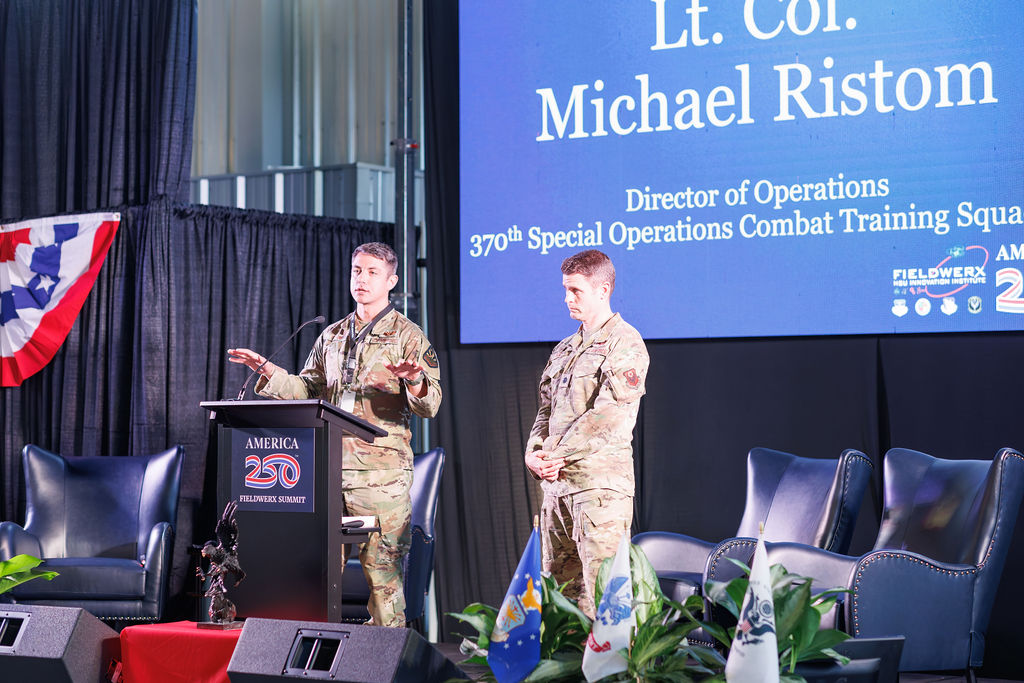Lt. Col. Kurtis Paul delivered an engaging presentation highlighting the evolution, impact, and future of drone technology across defense and industry. He outlined the historical development of unmanned systems—from early experimental aircraft in World War I to today’s MQ-9 Reaper—and emphasized how drones have shifted from intelligence support assets to essential combat platforms capable of executing entire missions autonomously. He underscored the growing importance of affordability and adaptability, citing Ukraine’s use of inexpensive drones as an example of cost-effective innovation on the modern battlefield. Lt. Col. Paul also discussed the need for greater civilian-military collaboration, improved airspace access, and continued support for STEM education to develop the next generation of drone innovators.
A recorded address from Secretary of Defense Pete Hegseth followed, announcing a federal initiative to strengthen U.S. drone dominance through three priorities: revitalizing domestic manufacturing, fielding low-cost American-made systems across combat units, and expanding realistic training and simulation programs. His remarks reinforced the importance of cutting bureaucracy to accelerate production and deployment.
Lt. Col. Michael Ristom closed the session by framing the operational and organizational challenges of integrating small UAS into daily operations. Drawing on his experience with the Air Force Strategic Studies Group, he highlighted the need to treat drones as modular “chassis” capable of performing diverse missions—from logistics and intelligence to defense applications. He emphasized doctrinal reform, agile prototyping, and clear command relationships to accelerate adoption across the force. Both officers concluded that innovation, experimentation, and partnership between the DoD, industry, and academia are vital to sustaining U.S. leadership in the rapidly evolving unmanned systems domain.



